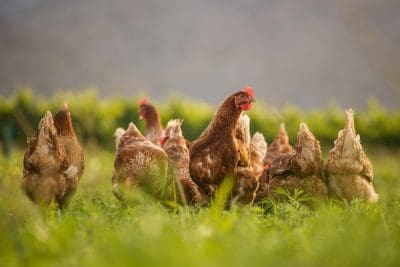With avian influenza spreading to a 10th Australian poultry facility, following on from reports of bird flu jumping from poultry to cattle in the US earlier this year, are Australian cattle now also at risk?
 It is a question being raised more earnestly as Australia deals with three parallel outbreaks of bird flu, two near Melbourne and one near Sydney.
It is a question being raised more earnestly as Australia deals with three parallel outbreaks of bird flu, two near Melbourne and one near Sydney.
The flu has mostly hit egg farms. Around 1.5 million birds have been or will be killed to control the spread of the virus.
Disease experts have told Beef Central this week that while the transmission of the disease from poultry to cattle here is “not impossible”, such a cross over is “highly unlikely”.
The Australian outbreaks are not caused by or related to the H5N1 strain of avian influenza causing mass animal deaths overseas and the strain reported to infect dairy cattle in the United States, Dr Frank Wong, bird flu expert at CSIRO’s Australian Centre for Disease Preparedness explained.
Dr José Quinteros, a lecturer in Poultry Health in the Sydney University’s School of Veterinary Science, said transmission to cattle in Australia was very unlikely because the pathogenic avian flu infecting poultry here is a different strain to what is in the US.
“It is not impossible – I would never say impossible – but most definitely very unlikely.”
Dr Quinteros added that there is ongoing concern over the emergence of virulent bird flu strains and their transmission across farms and states in Australia because it might be exacerbated by the presence of free-range operations, facilitating the interaction between wild avifauna and domestic poultry.
“This will require ongoing observation and management.”
Dr Frank Wong from CSIRO’s Australian Centre for Disease Preparedness said testing by the centre has shown the current Australian outbreaks of avian influenza are caused by three separate strains in the H7 family:
- the H7N3 strain at seven properties in the Meredith area of Victoria
- the H7N9 strain at one property in the Terang region of Victoria
- the H7N8 strain at two properties in the Hawkesbury district in NSW.
“By comparing the genetic codes of these viruses, scientists can see they are not closely related, but are more closely related to low pathogenic strains known to be carried by Australian wild birds,” Dr Wong said.
“This leads us to believe each outbreak is likely to have separately originated in wild birds as low pathogenic bird flu, spilled over into poultry, then mutated into these highly pathogenic viruses.
“The Australian H7 outbreaks are not caused by or related to the H5N1 strain of avian influenza. H5N1 is the high pathogenic avian influenza strain causing mass animal deaths overseas, and is the strain reported to infect dairy cattle in the United States.
“The H5N1 virus affecting cattle remains confined to the USA and has not been reported in birds or livestock animals anywhere else outside of the USA.
“On the other hand, the H7 viruses causing HPAI outbreaks in Australia remain bird-adapted viruses known only to infect farmed poultry. H7 avian influenza viruses have never been reported to cause infection in cattle or other livestock anywhere in the world including in Australia.
“So the risk of possible transmission from infected birds in Australia’s current bird flu outbreaks into cattle is considered to be low.
“The government is conducting enhanced surveillance monitoring of wild bird populations in Australia. This is important for both the existing outbreaks and to help us be informed and prepared for potential future outbreaks.
The bird flu virus, which was first reported in US poultry farms in 14 states in early 2022, has spread to cows and two humans in the first-ever cases of bird flu in humans in the United States.
The same subtype of bird flu is also spreading in other countries, in what experts are calling a “global pandemic for animals”.
US public health officials have been monitoring dairy cow herds, as well as beef and milk products around the country since the first outbreak in cows was reported in March.
So far, the US is the only country to have reported bird flu in cattle.
